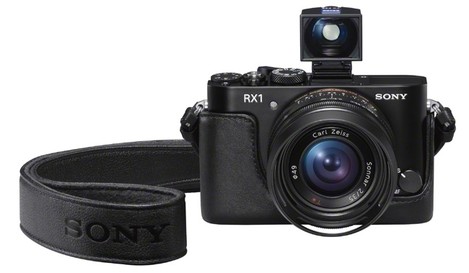Throwing away the colour

Tim Parkin
Amateur Photographer who plays with big cameras and film when in between digital photographs.
At the moment if you want to use a dedicated black and white sensor you’ve got the choice of buying an old Kodak DCS camera (in a full 1.2mp or 6mp formats), buying a Leica Monochrom for £5k or a Phase One IQ Achromat for about £36k. Not many realistic options really.
However there are rumours that Sony are looking at producing a monochrome version of one of their sensors as a dedicated lens RX1 which would (hopefully) bring this niche product to market at a reasonable price.
But why would anybody want a monochrome sensor in the first place? To know this you have to know how a colour sensor works. I’ll only give you a brief recap of the pertinent details as there is a good explanation of the Bayer array on Wikipedia. The most important fact is that each pixel in the Bayer array is covered by a colour filter. If you’ve ever used colour filters on a black and white camera you know that there is a filter factor involved because they block light. The filter factor for a blue or red filter is about 2 stops. That’s two stops of light blocked!
Higher Sensitivity
A black and white sensor is the same as a colour sensor but with the colour filters removed. That means that your native, base ISO is now around 800 instead of 200 (presuming a Sony sensor). This would mean an almost noiseless ISO of 6400.
The other good thing (or bad thing depending on your point of view) about having no colour filters is that you can go back to using black and white filters properly again. If you’ve ever tried to use a red filter in front of a colour digital camera you’ll know the loss of resolution you get because you’ve effectively disabled three out of the four pixels available - the green and blue filters receive almost no light with a red filter on. This leads to a more ‘natural’ filter effect (so I’ve been told by people who know better than me).
Now why can’t we just remove the colour filters from a current DSLR to get the same effect? Well you can, but it’s not easy - in fact it’s quite scary by all counts. Have a look at this article.
Some companies will remove the colour filters for you - I know of one that has done in the past and they have a page about monochrome sensors here.
Sharper Pictures
Another advantage of removing the colour filter is sharper pictures. Depending the subject your resolution on a colour sensor is only a fraction of what it should be. Imaging photographing a girl with red hair. Only the red pixels would pick up the red hair properly and only 25% of the pixels are red. This means less than half the resolution in the hair which leads to blocky, pixelated hairs. On a black and white sensor all the pixels pick up all the information and you get nice consistently drawn lines. In actual fact colour sensors aren’t quite as bad as this but the loss is still significant - estimated at between 15% and 30% depending on who you talk to.
More film like noise
If you do use higher ISOs the noise you get is actually a lot more randomly distributed (because it’s not affected by the different gains the colour channels get). This gives something that looks less digital like if not more film like.
Foveon Sensor?
The Foveon sensor has pixels that collect all the colours of light and hence have some of the resolution advantages of a dedicated black and white sensor but without the sensitivity advantages. Plus there are few high-resolution Foveon sensors. However it does seem like a good compromise for the black and white photographer.
Do I want one?
Well I must say that I like the idea of a black and white sensor and if I were to do a lot more black and white it would definitely be a consideration. If I was a dedicated black and white photographer I think this would be on my shopping list, especially if it has the 36mp sensor! I wouldn't expect to see one until early 2015 though.
I’d be interested in anybody’s opinion who uses either a Leica Monochrom or a Foveon sensor for black and white photography (or even an Achromat or converted sensor).
Featured Comments From:
John Beardsworth: No thanks. And I say that as someone whose first loyalty is to black and white.
Sure, there may be advantages in terms of high ISO (though slow ISO has its value too) and more in terms of sharpness. But as for more film like noise, or rather less digital-looking noise, get a film camera and get your hands wet.
AlexeyD: Just to point out – I would not expect sensor sensitivity to grow a lot with CFA removed. In the old days when camera manufacturers were less concerned about shooting in a dark cupboards at nighttime, the CFA were quite dense and taking them off leaving monochrome sensor did indeed result in 2 stops boost. Looking at Kodak monochrome cameras vs their non monochrome versions it seems around 2 stops gain. Nowadays the CFA are quite weak to accommodate high ISO shooting so taking them off won’t result in drastic sensitivity boost.
Regarding the existing sensor conversion – the link you posted Tim is got to be the most careless one ;). Iliah Borg on DPreview was the pioneer of the conversion (not the one referenced though) – he stripped Nikon D2X sensor CFA off and had monochrome D2X version. From what I recall he used solvent chemicals to dissolve the filters (building an insulation well around sensor chip and using the bath of solvents on the bare sensor surface). His method was repeated by a few brave souls on DPReview with success from what I recall. Considering how many old Kodak SLR/n/c and 14n are left around (they have 14megapixel fullframe sensor) and the sensor construction (where the chip itself sits in a ceramic bath like frame) – solvents method actually looks quite repeatable.
Joe Cornish: I am slightly skeptical whether the theory of the pure black and white camera quite translates in print as we are led to believe; and the control of tone using colour channels remains an attractive aspect of mono conversion from digital colour, to my way of thinking. Nevertheless I do think too that a Sony RX-1 monochrome would be a massively appealing product for traditional street photography, and open up that approach to those of us who still think the price of the Leica Monochrom is too high.
Jürgen Metzler: I Had the chance so see a comparison between b/w prints from the M9 and the Monochrom last year and I couldn’t believe the difference, sharpness and tonality of the MM prints were in a different league. Only for watching on a monitor I wouldn’t buy a monochrome version. However, for me, b/w is strictly connected with film, I don’t like the digital clearness in monochrome.


